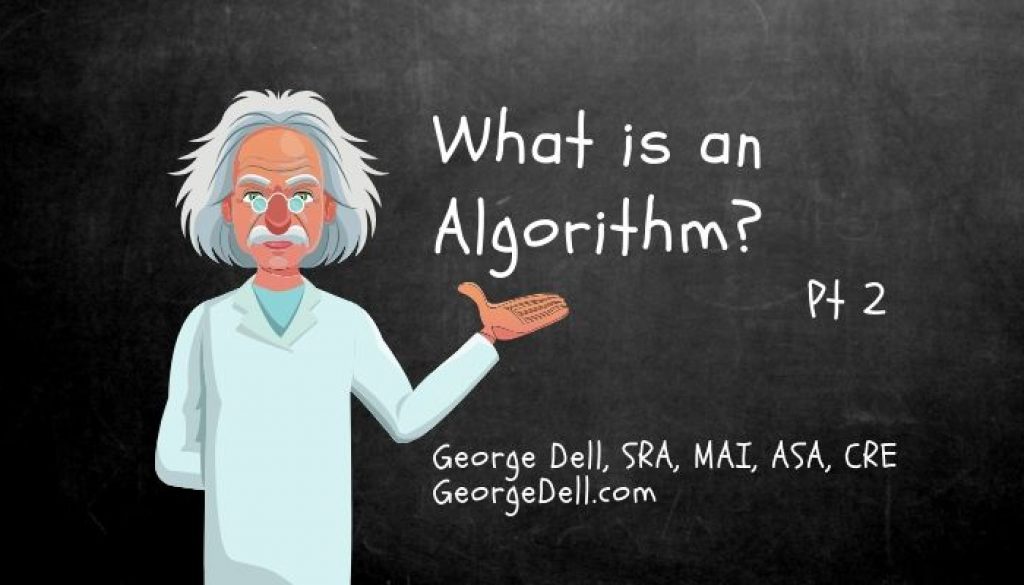An Algorithm can leverage appraiser market knowledge and experience. Algorithm combines computer power with informed human brain power. Algorithms are the key to the future of valuation work. Let’s continue on from What is an Algorithm? Part 1.
The future appraiser must own competencies in the use of models, algorithms, visualization, and the delivery of data stream reproducible results. In part 1, we considered how algorithms relate to the legacy practices of appraisal.
The Appraisal of Real Estate, 14th ed. p.35 says:
The valuation process is a systematic procedure an appraiser follows to provide answers to a client’s questions about real property value. It is a model …
We noted that the big issue with legacy practices is that the appraisal process starts with subjective selection of data, and ends with opinion. The data science approach is profoundly different. It is different in its focus of attention. It is a different view of data. And it’s different in its results.
Legacy appraisal delivers an opinion. Data Science delivers analytic results.
In this Part 2, we move forward to consider the role of algorithms in modern asset analytics. Recall that an algorithm is defined as a set of rules or a sequence of computer steps to solve a problem. Our context now is the data science approach to valuation.
Our purpose now is more than just a point value at a point time. It includes additional definitions and uses of value. It includes risk scoring, revaluation, and forecasting. This is data stream intelligence comprising services and products much needed by users, regulators, consumers and the public trust.
An algorithm should assist in providing answers to decisions about assets (which can include derivative assets such as loans secured by other assets. What kinds of analytic answers might be helpful to an investor, consumer, speculator, risk analyst, or portfolio manager? An initial list:
- Fundamental value; (“sustainability”)
- Reliability score (risk level)
- Price validation (transaction zone)
- Forecast distribution (market risk)
- Revaluation (“mark-to-market”)
The Data Science approach is top-down, it considers all the potentially relevant data, then sculpts away all the data that is not relevant. The ideal data set is not always 4 or 5 comps.
The sculpting or “whittling away” process is objectively delineated. The basis of similarity is derived from algorithms, selected by the analyst as an appropriate model for the problem at hand. Note the difference: The analyst selects the model, not the selection itself. Thus, the modern asset analyst© must have competence in modeling, selection of algorithms, and assisting the client in decisioning.
Finally, it is important to note that the data science approach focuses on the data, rather than on the property. It focuses on market analysis, not property analysis. The subject of EBV (Evidence Based Valuation)© is the market.
Property features are important, but only part of the input. The data science process is focused on predictive methods. Predictive algorithms can actually be quite simple, easy to illustrate and explain, and in many cases, simply ‘fall out’ of good wrangling. When you get the data right, the results flow.
The August 2019 TAAR (The Asset Analyst Report)© sets out an extended description of the four core data science algorithms used in asset analytics. TAAR is George Dell’s paid subscription report for those preparing for a career in asset assessment.
Editor’s Note: Link to Algorithm Part 3
